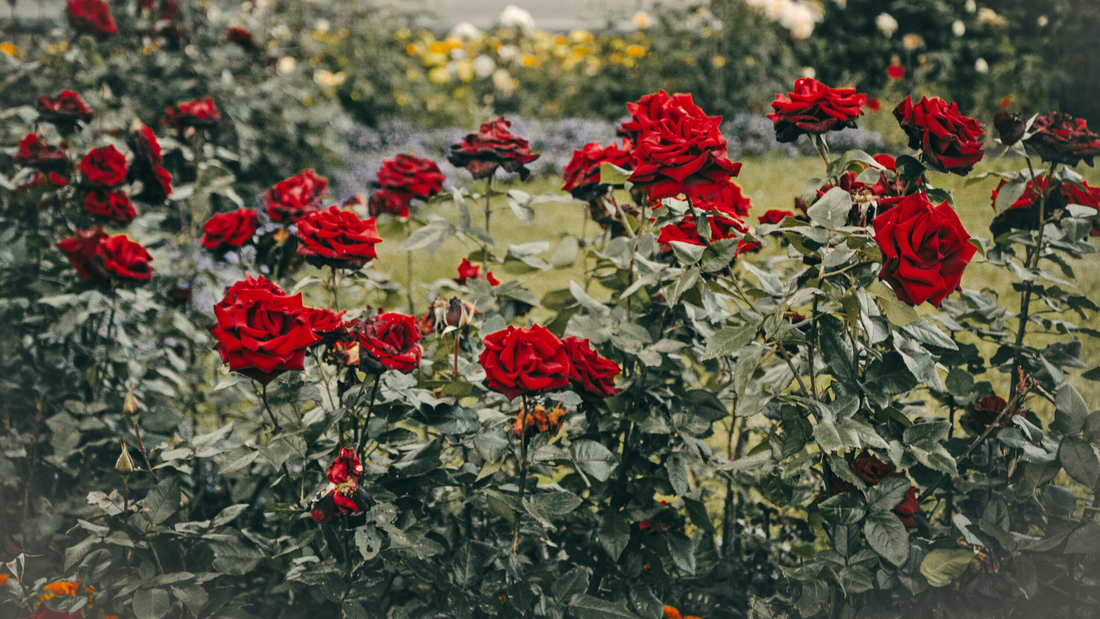
“There may be many flowers in one’s life...but only one rose,” claimed an anonymous writer.
And while it’s true that flowers of all sorts are an enticing treat for the beholder, it’s also true that roses reign supreme in the hierarchy of flowers, often serving as the ultimate symbol of love, beauty, devotion, and romance.
But has this always been the case? Based on fossil evidence, roses have been around for more than 35 million years, and it seems that roses’ connection to love, beauty, and romance began nearly synonymously with the evolution of art, particularly poetry (which existed in oral form for centuries before it was written down). It seems that for nearly as long as people have been expressing deep and tender feelings of love, the rose has been there to help them do it.
Keep reading to learn how the rose has been used as a potent and heartfelt symbol for ancient and modern people across the world.
Greek and Roman Creation Myths: Roses of Aphrodite
According to Greek mythology, the red rose was created by Aphrodite, the goddess of love. When Aphrodite’s lover, Adonis, was killed while hunting a wild boar, Aphrodite ran to try to save him, pricking her foot on a white rose, which turned red and remained that way for eternity. When Aphrodite watered the rose with her tears, it flourished and spawned many other roses, also the color of her blood.
The legend of the red rose’s creation continued in Roman mythology, where Aphrodite was replaced by Venus. Wealthy Romans reportedly filled their bedchambers with bouquets of roses to provide soft, pleasant-smelling surfaces and beautiful vistas.
Virgin Roses: The Influences of Christianity
Whereas ancient Christianity somewhat stripped the rose of its romantic and sexual connotations, it did associate it with purity, innocence, and love, albeit of a more sacred sort. In third century Christianity, the red rose became the symbol of the Virgin Mary. Many early scholars of Christainity believed that the Garden of Eden was full of thornless roses that only gained their thorns after the fall of Eve and the creation of Original Sin. Because of this, the Virgin Mary is often referred to as the “rose without thorns,” because she alone remained sinless.
The image of the Virgin Mary holding a rose or standing alongside rose bushes gained popularity in the twelfth century, when Gothic cathedrals with circular stained glass windows, known as rose windows, became popular. This association between Mary and the rose was strengthened in the thirteenth century when Saint Dominic created the notion of the rosary, a series of prayers to the Virgin Mary. Rosaries actually get their name from the word “rose,” and are meant to symbolize garlands of roses.
The connection between roses and divine love endures today with several reportings of the “miracle of the roses,” which is a mystical event where the growth of roses is meant to indicate an act of God.
There are many stories about the miracle of roses, but perhaps the most well known one involves the mid-thirteenth century Saint Elizabeth of Hungary. Although she came from a rich family she had deep compassion for the poor, and was constantly pilfering food from her family’s storeroom to feed the less fortunate members of her village. One day she stole bread, meat, and eggs and hid them under her mantle. On her way to the village, she met her husband, who asked her suspiciously what she had under her clothing. When he forced her to show him, the food had miraculously turned into a bouquet of roses.
While roses in this story do not represent romantic love, they certainly symbolize generosity and compassion.
Roses in the Eastern World
Throughout the world, we owe the tradition of growing roses in a garden to China, which started cultivating rose gardens about 5,000 years ago.
While the Chinese gave us rose gardens, it’s actually the ancient Hindus and the ancient Arabs (along with the ancient Greeks) who first associated the rose with love, beauty, and romance.
Hindu beliefs dating back centuries attest that Lakshmi, the goddess of fortune and prosperity and wife of Lord Vishnu, was created from 108 large and 1,008 small rose petals. Vishnu loved his wife deeply, and commonly spoke of her great beauty, creating an early link between roses, romance, and devotion.
An ancient Arabic legend also links roses to romance figuratively and the heart’s blood literally. The legend tells the story of a nightingale who fell in love with a white rose. His love was so intense that it caused the nightingale to sing for the first time, and, in so doing, realize the beauty of his own song. So overwhelmed by both his love and the sound of his own singing, the nightingale pressed himself upon the rose, and a thorn pierced his heart and turned the flower red with blood. Despite his pain, the nightingale continued pining for the rose, and eventually died while still clutching the rose to his body.
All these stories, be they Greek, Roman, Arabic, or Hindu, create an enduring link between one’s heart’s blood and feelings of intense devotion. Indeed, even from the earliest days of civilization, the rose symbolized enduring love and boundless beauty.
Roses in Modern Society
Associations between roses and love did not stop with the ancients. In fact, throughout the centuries, roses have appeared in everything from Medieval paintings to Shakespeare to modern day teen romance movies.
To look at just a few examples of how roses have been used to express love in art, in the 13th century, roses featured prominently in a French poem by Guillaume de Lorris called “Romance of the Rose,” where the rose is used to symbolize female sexuality. The first part of the poem details the Lover’s quest for a “rose,” which symbolizes the love of the lady he wishes to court and marry.
This use of the rose as metaphor for love and romance continued into the Renaissance, most notably in the works of Shakespeare, who sprinkled references to roses liberally throughout such plays as Romeo and Juliet, A Midsummer Night's Dream, and Antony and Cleopatra. Like artists and writers before him, Shakespeare used roses to symbolize love, beauty, desire, and purity.
In the 1740 French fairy tale “Beauty and the Beast” (it’s the version the Disney movie is based on), Belle asks her father to bring her a single rose when he returns from a business trip, while her two older sisters ask for jewelry and fancy clothes. Obviously, the rose is meant to symbolize not just Belle’s beauty, but also her kindness of spirit and lack of greed.
The Scottish poet Robert Burns immortalized the rose as a symbol of romance in his 1794 poem, “Red, Red Rose,” which compared his love to a red rose: “O, my love is like a red, red rose” begins the poem. Later, the poem says he will love the subject of the poem even when the “seas go dry and the sands of life run still,” connecting his intense feelings of enduring love, even beyond death, to roses.
In the 1800s, the Victorians strengthened the enduring link between romance and roses as we think of it today. The Victorians were obsessed with the language of flowers, or floriography, developing distinct meanings for every shade of flower imaginable and using this language to send flowers to friends, family, and lovers. It is this tradition that reaffirmed the rose as a symbol of romance. Professing feelings publicly was not considered acceptable at the time, so the language of flowers and the gifting of roses was a subtle way to express affection in this more restricted era.
The significance of the rose as a symbol of romance, and its use as a messaging system in courtship and dating has endured for centuries. We have even seen it manifest in popular culture, with a single red rose being the prize that allows a contestant on The Bachelor and The Bachelorette to continue their quest to win the heart of the star of the show.
Symbols that no longer speak deely to people’s emotions eventually die out. The fact that roses have lasted for centuries as symbols of love, means that, again and again, people have seen and felt the rightness of this connection. Roses have staying power precisely because they can encapsulate and represent feelings close to our hearts that can be difficult to put into words.
For the unmatched fragrance of roses that never wilt, check out Pureomeo essential oils today! We carry a delicately potent Rose Absolute in both oil and roll-on form, as well as a sustainably-produced and subtly sweet and herbaceous rosewood essential oil. Rose and rosewood essential oils not only smell like bottled romance, and make great massage oil, they can also be used to treat a wealth of conditions, such as acne, wrinkles, insomnia, depression, and achy muscles.
PureomEO™ sources the highest-quality ingredients available from eco-friendly and small-scale farms, distilleries, and producers. All of our products contain only all-natural, plant-based ingredients with no animal products, preservatives, or synthetics. Every batch of PureomEO™ Essential Oil is lab tested and analyzed for quality assurance.
Order online or stop by our North Loop shop today, and pick up all the health and wellness products you need to nourish all the greatest and most enduring loves of your life!

